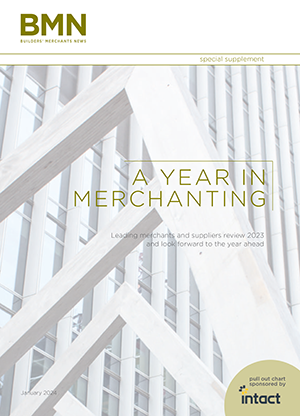As the land available in urban areas dwindles, more and more new housing developments are being built in rural areas outside the mains drainage network. This is creating rising demand for safe, effective and compliant systems to collect and store wastewater. But what do merchants need to know to make the most of this growth market?
With public health and environmental protection front of mind, official regulations surrounding wastewater treatment have tightened in recent years – but luckily, manufacturers have been quick to rise to the challenge. The key, in this challenge, is to produce a high-quality effluent that complies with these rules and regulations. While the onus is on the specifier or installer to know the legislation inside out, merchants who have a good knowledge of the latest product developments will be in pole position to make smart product recommendations.
A changing product landscape: the key players
The off-mains wastewater treatment market is evolving. Today, it boasts a continuously expanding range of safe, efficient and reliable solutions for rural projects:
Cesspools and septic tanks have historically been the most common wastewater solutions. However, they are typically very high-maintenance and provide little or no treatment at all. Cesspools act as a simple storage solution to retain raw sewage. They must be emptied regularly to avoid the risk of overflow and often prove to be very odorous. While septic tanks do offer limited treatment, the quality of the treated effluent that leaves the system is still very low.
Package sewage treatment systems, on the other hand, encourage the formation of bacteria. When mixed with raw sewage (either on moving plastic media or by intermittent aeration), these bacteria help break it down, producing a much higher quality effluent. In most cases, the treatment time depends on the speed of the incoming waste. At peak loads, the quality of the treated discharge can therefore be diminished.
While there are several types of package sewage treatment options on offer today (such as moving bed or activated sludge systems), we at Graf UK are seeing particular demand for Sequence Batch Reactor (SBR) systems: the most advanced wastewater treatment option currently available.
The future of the market
As SBR systems treat waste in batches, the incoming flow rate does not affect the speed of the treatment process, meaning the quality of discharge is consistently high. Aeration is intermittent, so SBR systems also use much less power than activated sludge systems (which aerate continuously) – and as they feature a buffer tank, the risk of untreated waste overflowing is significantly reduced. What’s more, SBR systems are the most durable, making them an effective long-term investment for off-mains projects. In fact, they offer some of the most compelling benefits for trade customers and end-users alike – and here at Graf UK, we see them as the future of off-mains wastewater treatment.
Knowledge is power
Ultimately, it’s important to keep up-to-date with market movements to benefit fully from this growing opportunity. Those merchants who can confidently introduce customers to the wastewater systems available to them – and provide solutions that will ensure compliance, optimum efficiency and reliable long-term performance – will be uniquely placed to reap the rewards.
Matthew Rolph, managing director, Graf UK.







